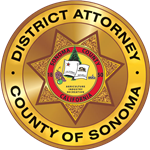Automobile Insurance Fraud Information

Automobile Insurance Fraud occurs when someone knowingly lies to obtain a benefit they are not otherwise entitled to receive. It can involve someone giving false and/or misleading information or documentation.
Some types of common frauds include:
- Crash and Buy- Purchasing an insurance policy after a collision and lying about when an accident occurred to obtain coverage.
- Paper Collision - Parties conspire to create illusion of legitimate accident using either pre-damaged vehicles or by intentionally and covertly inflicting damage on the suspect's vehicle(s). Generally, law enforcement is not called to the scene of the accident.
- Organized Ring - Collision orchestrated by organized criminal activity involving attorneys, doctors, other medical professionals, office administrators and/or cappers.
- Faked Property Damages - Damages to vehicle exaggerated, non-existent, pre-existing or vehicle damaged at a later point in time.
- Inflated Damages - Damages inflated or exaggerated, non-existent or pre-existing; excessive billing of vehicle body parts or repair work.
- Premium Fraud- Failing to disclose all material information when obtaining an insurance policy.
Consequences of Committing Auto Insurance Fraud
Automobile insurance fraud is a felony in California.
Violators can spend up to 5 years in prison, followed by a period of probation, as a result of a felony conviction. Violators can be ordered to pay a fine of $50,000. Penal Code § 550
In addition, violators will be court ordered to pay restitution to the insurance company for the amount paid on a fraudulent claim and the insurance company’s costs of the investigation.
There are many other associated expenses such as court costs and legal fees, not to mention the stigma of being a convicted felon.
You Can Be Convicted Of Insurance Fraud Even If The Insurance Company Does Not Pay Out On The Fraudulent Claim
Who can I contact about automobile insurance fraud?
Email us at DA-Auto-Insurance-Fraud-Referrals@sonomacounty.gov to report suspected automobile insurance fraud or request an outreach presentation for your group or organization.

 Translate
Translate